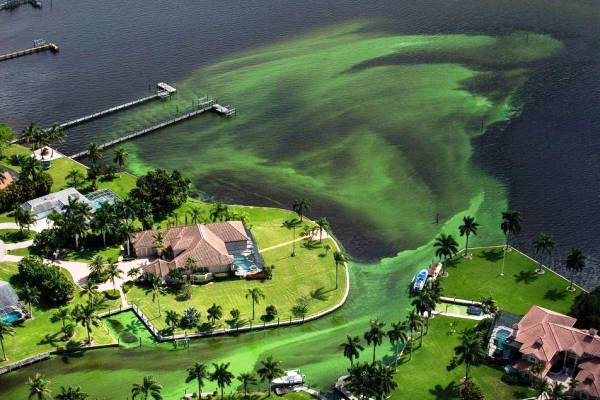Trending
Seasonal algae outbreaks defy easy solutions

No easy solutions exist for summertime algae outbreaks that suck oxygen out of two Florida rivers and cover parts of them with rancid green slime – a man-made problem that dates back more than a century.
Business interests drained much of the Everglades for development from the late 1800s into the 1900s with government acquiescence. Water that once naturally flowed south from Lake Okeechobee into the Everglades now flows via manmade diversions westward to the Caloosahatchee River and eastward to the St. Lucie River.
Development along the lake has brought phosphorous- and nitrogen-laced human waste, animal waste and fertilizer to its shoreline, and when seasonally heavy rains wash these pollutants into the lake, algae feed on them and reproduce rapidly.
Governor Rick Scott supports spending an unspecified amount to get owners of homes along Lake Okeechobee to switch from septic tanks to sewer lines.
Some environmentalists propose resuming the southward flow of water from Lake Okeechobee into vast reservoirs that would be built south of the lake. The water also would be cleaned through removal of nitrogen, phosphorous and other pollutants.
But Florida Atlantic University algae researcher Brian LaPointe said scrubbing away all of the nitrogen would be almost impossible, and he warned that waterborne flows of nitrogen would devastate Florida Bay’s seagrass and coral. [Associated Press] – Mike Seemuth




